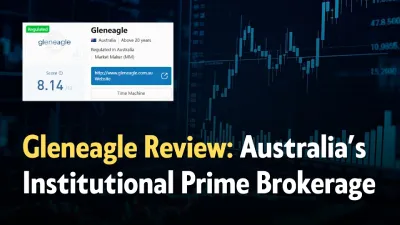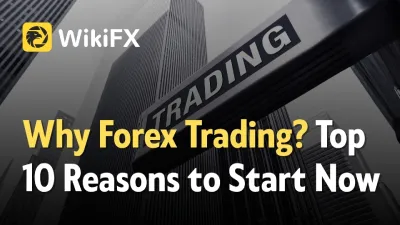Abstract:By understanding order flow, traders can better anticipate price movements. They can also make more informed trading decisions.

In order to be successful in forex trading, it is important to understand the concept of order flow. This involves understanding how buyers and sellers interact to create price movement. By understanding order flow, traders can better anticipate price movements and make more informed trading decisions.
Take Advantage of the Biggest Financial Event in London. This year we have expanded to new verticals in Online Trading, Fintech, Digital Assets, Blockchain, and Payments.
Forex Trading and the Order Flow
The spot foreign exchange market is the most traded financial market in the world, with a daily trading volume that can reach $6.6 trillion. Each time you enter an order on an online trading platform, the order will go through electronically. Some large trading orders may then be completed through verbal negotiation (inter-dealer brokerage).
For example, a Citibank trader wants to sell 200 million euros, in order to fill the order at the best price as soon as possible, the Citi trader needs to split the 200 million euros into several orders, ask for quotes from market makers such as JP Morgan, UBS or Goldman Sachs, negotiate to the best price and then fill the order one by one.
As you can see, the execution of large orders are generally interbank market institutions.
Some brokers who provide trading intermediary services to individual traders also participate in order executions, becoming buyers or sellers of orders. Examples of such large forex brokers are PCS, Goldman Sachs, CMC Markets or IG, as they themselves are able to get the best liquidity quotes from banks.
Brokers mainly offer their services to individual traders, and they also keep records of order flow. Order flow is generated when buyers and sellers in the forex marketplace place their intended orders. Order flow can be valuable to market makers or other types of brokers because it reflects the potential momentum of a currency pair's movement.
Order flow for foreign exchange trading comes primarily from the interbank market, which generates almost half of the global foreign exchange trading order flow on a daily basis. Since the liquidity of the foreign exchange market is basically achieved through the interbank market, it is necessary to study how these interbank institutional participants use order flow information to make trading decisions.

What Is Order Flow?
Financial institutions, such as banks, typically have a large number of clients around the world who may then have a need for foreign exchange trading. These financial institutions are, therefore, very active in markets such as interest rates and commodities, and they can act as intermediaries, brokering orders between buyers and sellers, thus generating order flow.
The key to trading with order flow is to determine the 'market depth' / 'depth of market' (DOM). The 'market depth' reflects the deep order information in the forex market, as well as the level of exchange rates at which customers are willing to trade.
Order flow is similar to an order list that follows market fluctuations. Institutional clients of banks usually don't care about every bit of price movement, they just choose an appropriate price level for traders to execute, which is equivalent to a limit order. Order flow, on the other hand, allows traders to see how much volume is being traded at a particular price level, and they then use this information to trade and generate potential profits.
The Impact of Market Order and Market Depth
For example, if you find a large number of sell orders for EUR/USD at 1.1000, it does not mean that these large sell orders will be filled, because if the exchange rate does not touch the level of 1.1000, these orders will not be filled, and the exchange rate will not fall sharply when it touches 1.1000; in addition, these orders may also be cancelled before they are filled, and after they are cancelled, the orders will not affect After cancellation, the order will not affect the exchange rate movement.
The order flow reflects all the orders of traders in the market, including the direction, price and size of orders. Many traders use order flow information to increase their trading advantage. Based on this, order flow trading is more appropriate in the futures market, as the forex market cannot see specific data such as trading volume.
Of course, this does not mean that the trader can trade in advance, as the client can cancel the trade order at any time.Using Order Flow to Determine Market Sentiment
If you are not an institutional trader, then order flow can be difficult to obtain. Most institutional traders use EBS or Thomson Reuters Dealing, platforms that allow them to develop internal order flow indicators.
In other words, when a broker has direct access to the EBS platform, he is trading directly in the primary liquidity market, at the 'deep liquidity' level, so order flow information can be viewed directly.
Order Flow in Option Market
Trading as an individual does not allow you to access the 'market depth' and order flow information. Fortunately, individual traders can refer to other markets, such as futures, ETFs, and options markets, to speculate on market sentiment.
The trading volume in the futures market reflects the overall trading of a specific contract. The liquidity of futures contracts on foreign exchange currency pairs is very high, ensuring that the currency rates in the futures market and the OTC market are consistent and preventing arbitrage activities.
If there is a sharp increase in the trading volume of futures contracts around a specific time or price level, it is likely that traders are entering the operation. The problem, however, is that you cannot know this information in advance, so you must determine whether this sharp increase in trading volume will push prices higher or weaken them.
You can also use information about open positions in the market to determine market sentiment. If the volume is greater than the amount of open positions, new orders are entering the market, indicating a more positive market sentiment. If there are no new orders entering the market, it indicates a low market sentiment.
In addition, data related to the options market is very useful and, like the futures market, can help determine the long and short market sentiment.
Conclusion
Order flow is valuable information for institutional traders and individual traders alike. Traders use forex order flow information to understand whether the market is likely to be trending or stagnant. The idea of order flow is the process of understanding the microstructure of the market from each trade, digging into the information, sentiment and real buying and selling power contrast brought by the market from the surprising trade data. However, the market is evolving and the information contained in candlesticks is gradually decreasing, so we need to put on a microscope to observe the information contained in each trade in the order book.















